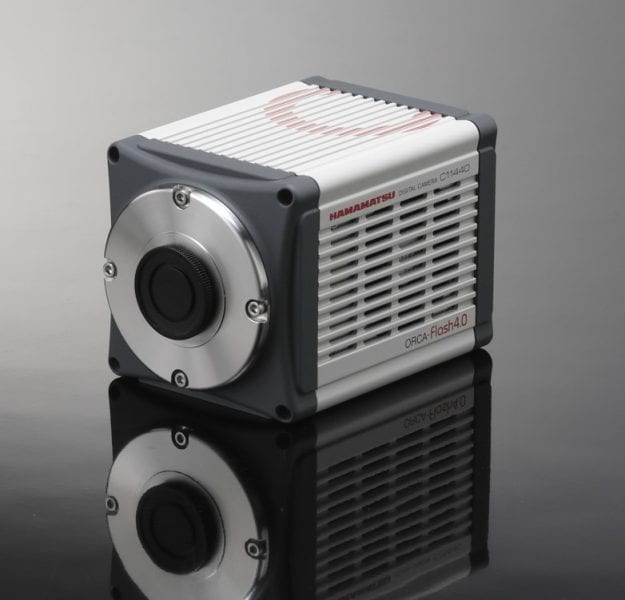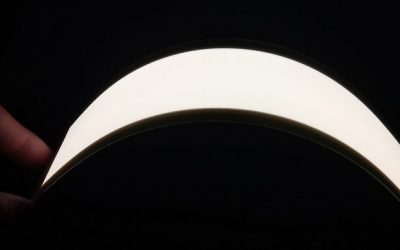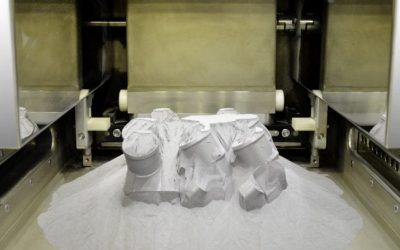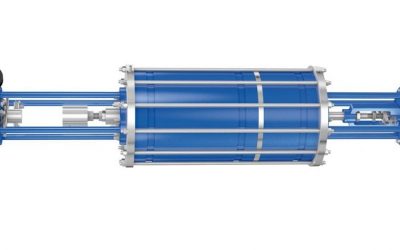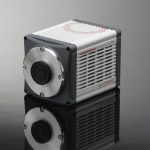 The fast scan (standard) produces a low read noise of only 1.9 electrons rms (1.3 electrons median), which is suitable for most experiments. The slow scan with read noise of 1.5 electrons rms (0.9 electrons median) is designed for experiments where lower noise is more important than raw speed. Another new feature is the „Lightsheet Readout Mode“, which allows seamless integration of the camera with light sheet microscopy systems. In this readout method, the „Gen II“ sCMOS sensor is read out in one sweep across the sensor from top to bottom or bottom to top. This enables the best speeds and synchronization for light sheet microscopy. A third new feature is „ImageConductor connectivity“, which enables for both USB 3.0 (default) and CameraLink connectivity. The default USB 3.0 camera configuration is perfect for 30 frames/s imaging at the full 4-megapixel resolution. If a faster frame rate is needed now or later, adding a high-speed CameraLink board and cable is easy to do, allowing the camera to achieve 100 frames/s at full resolution. Other features include high quantum efficiency (over 70% at 600 nm and 50% at 750 nm) and a global reset function. The global reset allows camera users to acquire global exposures and choose to have either an external source or the camera be master of the timing.
The fast scan (standard) produces a low read noise of only 1.9 electrons rms (1.3 electrons median), which is suitable for most experiments. The slow scan with read noise of 1.5 electrons rms (0.9 electrons median) is designed for experiments where lower noise is more important than raw speed. Another new feature is the „Lightsheet Readout Mode“, which allows seamless integration of the camera with light sheet microscopy systems. In this readout method, the „Gen II“ sCMOS sensor is read out in one sweep across the sensor from top to bottom or bottom to top. This enables the best speeds and synchronization for light sheet microscopy. A third new feature is „ImageConductor connectivity“, which enables for both USB 3.0 (default) and CameraLink connectivity. The default USB 3.0 camera configuration is perfect for 30 frames/s imaging at the full 4-megapixel resolution. If a faster frame rate is needed now or later, adding a high-speed CameraLink board and cable is easy to do, allowing the camera to achieve 100 frames/s at full resolution. Other features include high quantum efficiency (over 70% at 600 nm and 50% at 750 nm) and a global reset function. The global reset allows camera users to acquire global exposures and choose to have either an external source or the camera be master of the timing.
The camera is suited for super-resolution microscopy, TIRF microscopy, ratio imaging, light sheet microscopy, FRET, high-speed calcium ion imaging, real-time confocal microscopy, and other imaging applications.
Hamamatsu Photonics Deutschland GmbH
Arzbergerstr. 10
82211 Herrsching, Germany
Phone: +49 (0)8152 375-0
Fax: +49 (0)8152 375-111
mailto: [email protected]
www.hamamatsu.com

